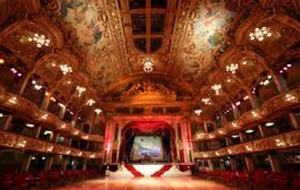 From the creators of “Spirit of the Dance”, Keep Dancing – a brand new Ballroom and Latin dance show – is set to wow audiences, featuring special guests from Strictly Come Dancing and celebrating the ever-popular world of Ballroom and Latin dance. The major tour of the UK will begin August 2016, featuring stars from Strictly including Jay McGuinness, Lisa Riley and Louis Smith. Strictly favourite Robin Windsor, and other professional dancers from Strictly Come Dancing, will dance alongside world-champion Ballroom and Latin dancers.
From the creators of “Spirit of the Dance”, Keep Dancing – a brand new Ballroom and Latin dance show – is set to wow audiences, featuring special guests from Strictly Come Dancing and celebrating the ever-popular world of Ballroom and Latin dance. The major tour of the UK will begin August 2016, featuring stars from Strictly including Jay McGuinness, Lisa Riley and Louis Smith. Strictly favourite Robin Windsor, and other professional dancers from Strictly Come Dancing, will dance alongside world-champion Ballroom and Latin dancers.
The tour will feature some of the most popular styles of Ballroom and Latin in this fast-paced, high intensity production. With dazzling costumes and breathtaking choreography, Keep Dancing includes both champion performers and stunning dance routines for non-stop entertainment.
Confirmed guest stars include singer and dancer Jay McGuinness, who be performing with his winning professional partner Aliona. Before becoming the 2015 Strictly Champion, Jay enjoyed success as a member of the band The Wanted. Louis Smith was the first British gymnast to win an Olympic medal for over 100 years at the Beijing Olympics in 2008, followed by success at the London 2012 Olympics. He was the celebrity winner of the 2012 Strictly. Lisa Riley and Robin Windsor were one of the most popular couples in the 2012 series of Strictly Come Dancing. Lisa is best known for her former long-running role in ITV’s Emmerdale, and the co-host of You’ve Been Framed.
Keep Dancing will tour to Bromley Churchill Theatre, Milton Keynes Theatre, Wimbledon New Theatre, Cardiff New Theatre, York Opera House, Manchester Palace Theatre, Woking New Theatre, Glasgow Theatre Royal, Liverpool Empire, Eastbourne Congress, Edinburgh Playhouse and Birmingham Alexandra, with 2017 tour dates to be announced soon.
Category: Uncategorised
Can acrobatics ever be dance?
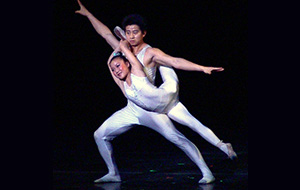 With gymnastics predominantly classed as a sport and dance an art, it seems the boundaries of the two are blurring as dancers aspire to more ways to stand out from the group. Of course gymnastics has always had a connection to dance – at the Olympic Games the gymnasts must incorporate an element of ‘dance’ to their floor routines – especially as dance is evolving to incorporate more content. Some may argue this is at the expense of technique and artistry.
With gymnastics predominantly classed as a sport and dance an art, it seems the boundaries of the two are blurring as dancers aspire to more ways to stand out from the group. Of course gymnastics has always had a connection to dance – at the Olympic Games the gymnasts must incorporate an element of ‘dance’ to their floor routines – especially as dance is evolving to incorporate more content. Some may argue this is at the expense of technique and artistry.
The penchée that goes past 180 degrees and the multiple ‘ice skater’ pirouettes with the foot at the ankle go some way in demonstrating the need by some dancers to impress and extend beyond the realm of dance. It goes without saying that a dancer needs a certain degree of suppleness in order to perform to a full capacity, however – especially in the competition circuit – dancers are encouraged to fill lyrical variations with oversplit legs and flips. For those adjudicating, this is not always desirable and has moved far from where dance is thought to be.
Pushing the boundaries of dance and choreography is not discouraged, in fact it is celebrated in choreographers, however the incorporation of acrobatics in dances can even be dangerous. YouTube can be a culprit, with young dancers privy to extreme dance, then inspired to overstretch and push themselves, believing this is the key to success. Injuries can occur that are not usually associated with dance, with young dancers attempting difficult gymnastic poses and extreme forms of stretching, risking immediate and long term physical harm. This is in addition to the fact it is harder to create real choreography than to insert a cartwheel!
Adding to the competition culture is the fact many young dancers see them as the ultimate goal; many competitions provide useful experience and feedback but dancing is not just about winning. As an extension, the gymnastic and acrobatic moves practised have little to do with the professional dance world – very few companies in today’s ballet or contemporary dance companies would require this. Companies would be more interested if the dancer can blend into their existing group and not miss basic elements that are foundations in the professional dance industry.
Australia Council funding news
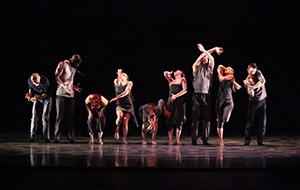 The month of May saw disappointing funding news for the arts in Australia, with as many as 63 arts companies and organisations informed that they had lost their Australia Council funding. Among those affected, organisations that have solid roots with years to their names were too disregarded; for many the loss of Australia Council funding is significant as it is core organisational funding that is relied on so heavily. Whilst organisations may still apply for project funding, that from the Council does provide the stability and security they require to plan for the future and indeed survive.
The month of May saw disappointing funding news for the arts in Australia, with as many as 63 arts companies and organisations informed that they had lost their Australia Council funding. Among those affected, organisations that have solid roots with years to their names were too disregarded; for many the loss of Australia Council funding is significant as it is core organisational funding that is relied on so heavily. Whilst organisations may still apply for project funding, that from the Council does provide the stability and security they require to plan for the future and indeed survive.
Organisations such as KAGE, Force Majeure and Balletlab were among those that lost funding, dance theatre companies with successful histories. KAGE, for example, is a small company nearly 20 years old, having survived for 16 years on short-term and project grants. 2012 saw the organisation receive its first AC Key Organisations grant over four years, yet 2016 has seen its future falter in uncertainty. Much of KAGE’s artistic programme is devoted to bringing dance into the community, rather than solely producing dance for the stage. The focus is just as much on teaching, exchange and making dance accessible as it is on performing.
Additionally, The Australian Dance Council (Ausdance Inc (Ausdance National) has been notified by the Australia Council that it will not receive operational funding beyond the end of December this year, another blow to the arts community down under. Ausdance National supports the Australian Dance Awards, the National Dance Forum and safe dance research, among many other activities, and is a keystone for dance in Australia.
Last year, Australia Council’s funding was reduced by $105million by the former arts minister, which meant Australia’s small-to-medium arts companies were aware that cuts were imminent, despite the fact a third of the lost funding was then restored by the new minister. 43 new organisations have received multi-year grants for the first time, however many may contest the funding of these at the expense of established companies, regardless of how important shift and evolution is for the arts.
English National Ballet’s Emerging Dancer 2016 winner
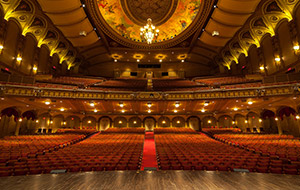 English National Ballet’s winner of both the 2016 Emerging Dancer Award and People’s Choice Award was Cesar Corrales, competing in May against five other company hopefuls. Now in its seventh year, Emerging Dancer allows English National Ballet to recognise and nurture talent, and encourage excellence in the company, with young and emerging dancers nominated to take part. For 2016 the other finalists were Isabelle Brouwers, Jeanette Kakareka, Rina Kanehara, Daniele Silingardi and Erik Woolhouse.
English National Ballet’s winner of both the 2016 Emerging Dancer Award and People’s Choice Award was Cesar Corrales, competing in May against five other company hopefuls. Now in its seventh year, Emerging Dancer allows English National Ballet to recognise and nurture talent, and encourage excellence in the company, with young and emerging dancers nominated to take part. For 2016 the other finalists were Isabelle Brouwers, Jeanette Kakareka, Rina Kanehara, Daniele Silingardi and Erik Woolhouse.
Corrales joined the Company in 2014 and was promoted to Junior Soloist last year, following in the footsteps of his parents who are also professional dancers. For the competition itself Corrales performed Contrabajo para hombre solo by Julio Lopez, as well as a pas de deux from Diana and Acteon with fellow finalist Rina Kanehara. The pair were well matched and gave strong performances, with Corrales scooping both the Emerging Dancer Award and People’s Choice Award at the London Palladium.
Announced live on stage at the Palladium on 17 May, and for the first time live streamed to audiences across the world, Corrales was selected as this year’s winner by a judging panel made up of leading figures in ballet and dance; Tamara Rojo, Sir Matthew Bourne OBE, Viviana Durante, Thomas Edur CBE, Russell Maliphant, Oxana Panchenko, and Morgann Runacre-Temple. He was chosen as the winner of the People’s Choice Award by members of the public, who voted throughout the 2015/2016 season.
The evening gives the company and its audiences the opportunity to celebrate the young dancers of English National Ballet – both onstage, and live streamed online. Having this platform allows both the artistic team and the dancers to continue their commitment to nurture the stars of the future, and develop them artistically. The evening also saw Jennie Harrington win the new Corps de Ballet Award, presented to an exceptional Artist of the Company who has gone above and beyond the call of duty over the last season.
The Genée in Sydney
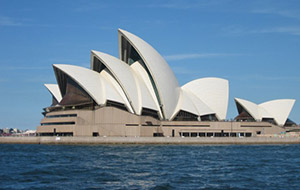 This year’s Genée International Ballet Competition, presented by the Royal Academy of Dance, is to be held in Sydney, Australia in December. As the country’s summer time, December will see competition candidates from all over the world – but it is thought predominantly from Australia – journey to the city in order to compete for the prize money and exposure offered by the competition. Previous winners and medallists of the competition have gone on to dance with and choreograph for the world’s best dance companies, so taking part in the competition is worthwhile indeed.
This year’s Genée International Ballet Competition, presented by the Royal Academy of Dance, is to be held in Sydney, Australia in December. As the country’s summer time, December will see competition candidates from all over the world – but it is thought predominantly from Australia – journey to the city in order to compete for the prize money and exposure offered by the competition. Previous winners and medallists of the competition have gone on to dance with and choreograph for the world’s best dance companies, so taking part in the competition is worthwhile indeed.
Recently announced for the competition is that Steven McRae, principal at the Royal Ballet, is an ambassador for the Genée this year. McRae himself competed when the competition was last held in Sydney in 2002, scooping the gold medal as an Australian native. Today he is tearing up the stage in a variety of classical and modern repertoire with the Royal Ballet, even as a tap dancing rabbit in an Alice in Wonderland interpretation. Whilst there has been many notable recipients of the Genée medals, there is a significant number of Australians within this. The Royal Academy of Dance’s Genée Alumni scheme works to reconnect with all past candidates and celebrate their various successes.
The competition is made up of 10 days activity, the majority of which is coaching for the candidates, culminating in the Final at the Sydney Opera House. Three days of Semi-finals ahead of this at the Concourse will whittle down the candidates to just 12 young aspiring dancers, focused solely on winning the final. With judges including the artistic directors of Australian Ballet, Royal New Zealand Ballet and the Royal Ballet, the candidates will be put through their paces both technically and artistically. They will dance both a classical variation and a piece of their own, in addition to learning commissioned choreography.
The new bbodance
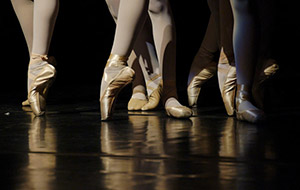 bbodance, formerly known as the British Ballet Organisation, recently announced the appointment of Michael Nunn OBE, William Trevitt OBE and Kerry Whelan as the new Co-Artistic Director consultants. Nunn, Trevitt and Whelan, the team behind internationally renowned dance company BalletBoyz will join bbodance to provide artistic direction, help grow its membership and introduce innovative and exciting projects.
bbodance, formerly known as the British Ballet Organisation, recently announced the appointment of Michael Nunn OBE, William Trevitt OBE and Kerry Whelan as the new Co-Artistic Director consultants. Nunn, Trevitt and Whelan, the team behind internationally renowned dance company BalletBoyz will join bbodance to provide artistic direction, help grow its membership and introduce innovative and exciting projects.
The long history of the British Ballet Organisation has a rich heritage and legacy, and the trio aim to continue this in their taking up of the artistic reins. The change and rebrand is a significant shift for the organisation, including a move to new premises and a major overhaul of the teaching syllabi. To this end, the values pursued at BalletBoyz, namely excellence, quality and the shared enjoyment of dance, will continue through the new bbodance.
Over nearly 90 years, the organisation has built a rich history into its brand. This 2016 change is part of bbodance’s commitment to improving its services, events and membership benefits across the dance services provided by the organisation. As part of bbodance’s commitment to innovation it also announced the launch of a new musical theatre dance syllabus in 2016, a welcome addition to its sole focus on ballet.
The foundations for a modernised bbodance are now in place with new visions from the award winning Artistic Directors. Their expertise will provide a secure platform to inspire and promote excellence in dance training while retaining the bbodance traditional values. Additionally, the new London headquarters includes studios, a library and classrooms to provide the space to hold bbodance teacher training programme on-site, a base for all future syllabus development and a home for all bbodance members. It is hoped that this will create a lasting legacy for future generations of ballet dancers and teachers.
Rambert floor South Africa bound
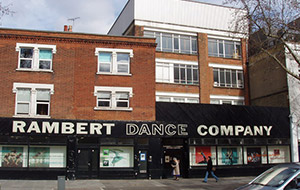 Dane Hurst, of Rambert dance company, left his native South Africa 13 years ago headed for the UK. He recently returned in order to begin the process of sharing dance with other young people who want to escape the streets, bringing a dance floor over from London by ship. The floor is the former rehearsal floor of Rambert, sold when the dance company moved from Chiswick to its new home on London’s South Bank.
Dane Hurst, of Rambert dance company, left his native South Africa 13 years ago headed for the UK. He recently returned in order to begin the process of sharing dance with other young people who want to escape the streets, bringing a dance floor over from London by ship. The floor is the former rehearsal floor of Rambert, sold when the dance company moved from Chiswick to its new home on London’s South Bank.
Dane learned all the pieces he has danced for Rambert on the floor; being reinforced vinyl it will soften the young South Africans’ landings as a shock absorber, protecting joints and withstanding friction and heat. After he bought the floor, Dane won best male dancer at the Critics’ Circle Awards in 2014. He used the ceremony to announce his dream to use dance to empower young people in his homeland, and asked for help inspiring young children to dance as he once was. He approached an architect to design a dance centre made out of shipping containers, for when there are funds to build it, to then house the floor.
As a child dance was a release for Dane, discovering ballet because his grandmother made costumes at the local dance school, during the time of apartheid. Eventually Dane escaped and was able to dance in London with a scholarship, training at the Rambert School of Ballet and Contemporary Dance. Now aged 32 it is time for Dane to leave his wild dream of being a dancer, in order to pursue a new dream. Dane has established an organisation called the Moving Assembly Project and launched a pilot project: two weeks of workshops at a health and education centre. Another ex-Rambert dancer, Estela Merlos, also journeyed to Africa to help Dane teach, giving the children a way to survive.
Dance plans for east London
 There are plans in the pipeline to make London the capital of dance in the world, with the aim to rejuvenate the arts – specifically dance – in east London. Plans to create a new dance hub in east London have been announced recently, and by 2021 the area will see 16 new dance studios, two production studios, a 600-seat dance theatre, a hip hop academy, a ballet school and a choreographic school, all within a few miles of Stratford.
There are plans in the pipeline to make London the capital of dance in the world, with the aim to rejuvenate the arts – specifically dance – in east London. Plans to create a new dance hub in east London have been announced recently, and by 2021 the area will see 16 new dance studios, two production studios, a 600-seat dance theatre, a hip hop academy, a ballet school and a choreographic school, all within a few miles of Stratford.
The plans are the result of Sadler’s Wells, English National Ballet and Studio Wayne McGregor moving to the area, three major dance organisations that will all work with local dance agency East London Dance to achieve these aims. Multi-award-winning choreographer Wayne McGregor has already moved east. Coincidentally, his career began running community dance groups in Redbridge in the 1990s, to return to the area is going full circle. For Studio Wayne McGregor, the plan is to offer free rehearsal space to 25 artists each year, and in return the artists will offer workshops or performances in the local community.
The plans to move will also go some way in integrating dance into other places in the community it will be inhabiting. The Olympic Park will see Sadler’s Wells add to its current Angel and Holborn theatres in the capital, in order to house dance performances that don’t currently have a home in London. As well as bringing in international artists, there will be a big focus on nurturing home-grown talent, with a new hip hop academy, an extension of the annual Breakin’ Convention festival, which will let hip hop artists study to conservatoire level, and then in a choreographic school.
English National Ballet is too travelling, setting up home in the new London City Island development, the opposite end of the city to its long-time home in South Kensington. By 2018 the building will be the new home of both the company and the English National Ballet School, providing more studios and a full-size production space – the first of its kind in the city – as well as a rehab centre for the dancers. The aim is for the public to see the creative process in open rehearsals, and to set up a big screen outside for performances within the community.
Full programme for FRAME Festival
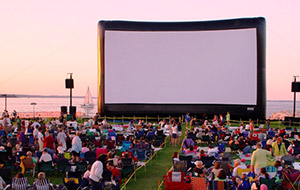 FRAME, the London dance film festival, recently announced its full programme. Presented by BalletBoyz in association with Dancescreen, the programme of film screenings, performances, free public events, family activities and workshops looks set to delight audiences at the first ever festival. A Gene Kelly retrospective including dance films from across the decades will also feature, in addition to industry talks with leading filmmakers, broadcasters and choreographers.
FRAME, the London dance film festival, recently announced its full programme. Presented by BalletBoyz in association with Dancescreen, the programme of film screenings, performances, free public events, family activities and workshops looks set to delight audiences at the first ever festival. A Gene Kelly retrospective including dance films from across the decades will also feature, in addition to industry talks with leading filmmakers, broadcasters and choreographers.
The vast programme will take place from 9-12 June in Kingston-upon-Thames, London. The festival is set to offer a unique opportunity to enjoy the best creative talent in dance and film to the general public, as well engaging broadcasters, video artists and choreographers. Over three days, there will be over 122 films screened with 11 World Premieres, 8 International, 4 European and 28 UK Premieres amongst the new work. These will be classic films for all ages led by a celebration of Gene Kelly, dance performances and outdoor and family activities too.
In terms of film screenings, the contribution of British filmmaking to musicals over the last 40 years includes presenting FAME (1980), STREETDANCE (2010), HAPPY FEET (2006) and DESERT DANCER (2014). FRAME will then pay tribute to the Golden Age of Hollywood with a celebration of one of its greatest dance stars, Gene Kelly. SINGIN’ IN THE RAIN (1952) will be screened alongside the rarely seen INVITATION TO THE DANCE (1956), and THAT’S ENTERTAINMENT! (1974), a compilation of moments from MGM musicals featuring Kelly, Fred Astaire and Liza Minnelli.
FRAME has created a wide-ranging series of talks and activities to complement the screenings, designed to stimulate interest and insight into the diverse ways in which dance can be presented on film. Focused on specifically are dance for camera, filming music videos and Big Dance Shorts, showcasing exciting collaborations in choreography and directing.
All screenings will take place at Rose Theatre, Odeon Cinema, Bentall’s Store and Wow Café. The dancescreen competition winners will be announced at the closing night award ceremony on 12 June, followed by a special live performance by BalletBoyz.
Boston Ballet and William Forsythe
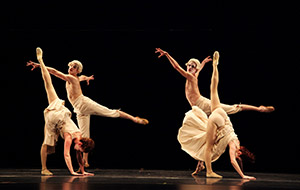 Boston Ballet recently announced a five-year partnership with the iconic choreographer William Forsythe, with an agreement to add one of his works to its repertoire each year, as well as performing four of his ballets already in the company repertory. This coup for the American company will see Forsythe work closely with the dancers, now he no longer runs his own company. The first work to be acquired is Forsythe’s Artifact, which will be performed in spring next year at the Boston Opera House.
Boston Ballet recently announced a five-year partnership with the iconic choreographer William Forsythe, with an agreement to add one of his works to its repertoire each year, as well as performing four of his ballets already in the company repertory. This coup for the American company will see Forsythe work closely with the dancers, now he no longer runs his own company. The first work to be acquired is Forsythe’s Artifact, which will be performed in spring next year at the Boston Opera House.
Forsythe is currently the associate choreographer at Paris Opera Ballet, with the aim to leave the position when Benjamin Millepied, the current director of dance, steps down in the summer. Forsythe also holds the position of professor of dance at the University of Southern California Glorya Kaufman School of Dance, spreading his influence far across the dance industry. As a choreographer Forsythe’s work is held in high regard, an important modern artist and a profound voice, in dance across the world.
The partnership may see new work created by Forsythe for the company, providing him with the space to develop new ideas and concepts for the dancers. Whilst the works that will enter the company’s repertory after Artifact are still unknown, it has been suggested that the artistic director of Boston Ballet hopes to acquire pieces that are less well-known to North American audiences.
The opportunity for the classical dancers to work with and experience Forsythe’s choreography is a great one, developing the dancers’ capacity and opening their visions to new works. While Forsythe’s style is currently unknown to the ballet dancers, they will begin workshops with a former member of Forsythe’s company – and currently the director of the dance programme at Harvard – Jill Johnson, so the dancers can get used to his working methods.
